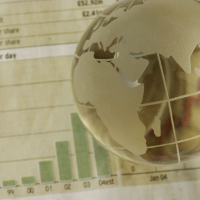While the RBA has hinted that it might embrace quantitative easing, it might not be enough, according to Kapstream portfolio manager Daniel Siluk.
“I don’t think quantitative easing would be as effective in Australia as it has been in other economies,” Mr Siluk told Investor Daily.
“In the US, where mortgagees borrow 30 a year or long-term debt, QE has typically flattened curves, and a flat curve doesn’t really help a mortgagee in Australia. So I don’t believe QE in Australia is the solution.”
He advocates instead for the use of “helicopter money”, citing the precedent of the Rudd government’s $42 billion stimulus package that saw 8.7 million Aussies receive $950.
“A direct injection… I think that’s a more powerful tool than QE would be,” said Mr Siluk.
But would a direct injection really work?
Helicopter money is a hammer, not a scalpel, and can push economies towards hyperinflation, as it did in Zimbabwe and Argentina. Despite that, the concept has plenty of friends in the mainstream.
A report from Blackrock makes a case for the careful use of helicopter money, noting that it is difficult to “get the inflation genie back in the bottle” but that the challenging global outlook – both economic and political – could justify its use.
This was echoed by Warren Hogan, UTS executive-in-residence and former ANZ chief economist.
“I don’t think we’re going to get to that policy initiative unless we’re at a genuine crisis point,” Professor Hogan told Investor Daily.
“In the scope of the next couple of years if we get a global recession that sort of interacts with the weak domestic scene and it looks like we’re going into recession and unemployment is going up, that certainly is an environment where that kind of policy tool could be put on the table.”
But Professor Hogan holds that direct injection of cash into the economy would not be enough to turn things around, and says that a suite of government policies – including infrastructural spending and tax cuts – could be the way to go.
“A direct cash handout by itself only has so much usefulness when you’re staring at a recession. It has to be a fiscal package,” he said.







